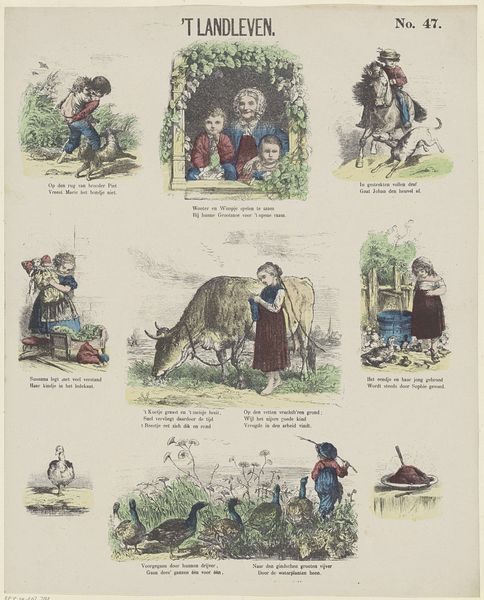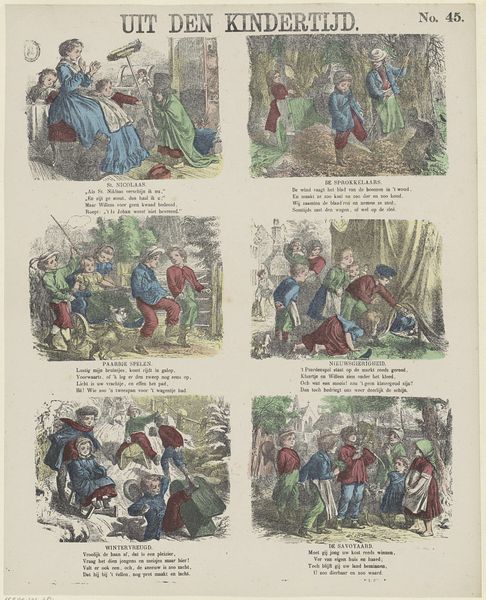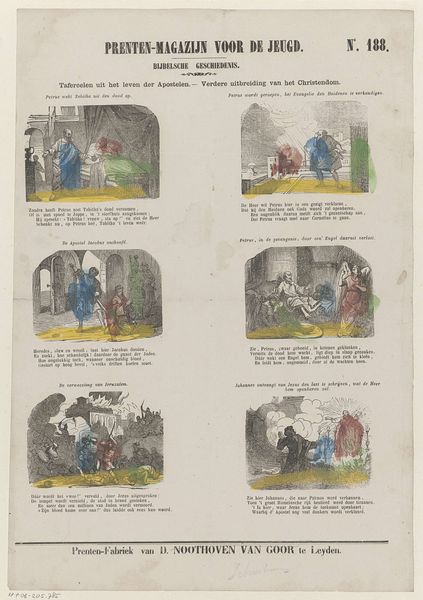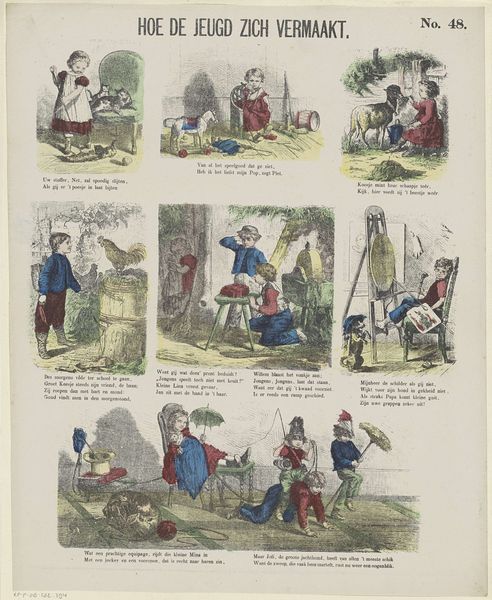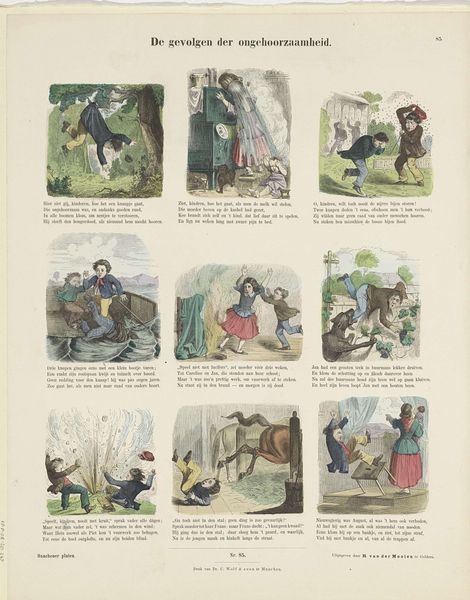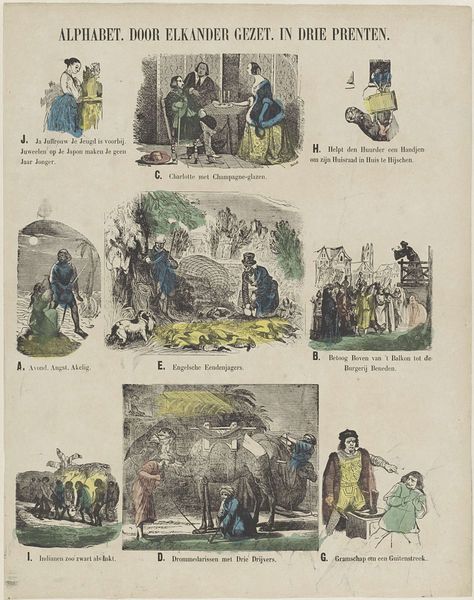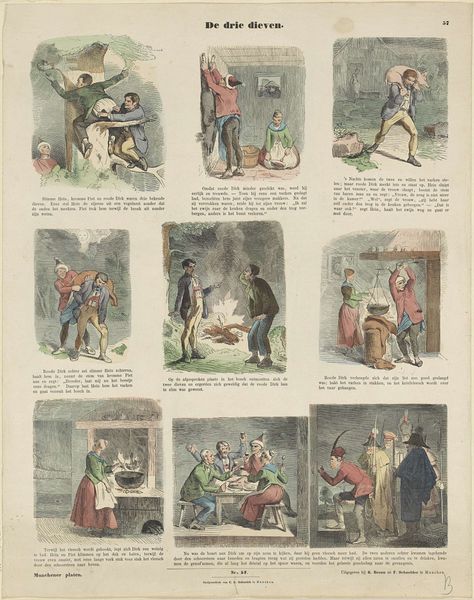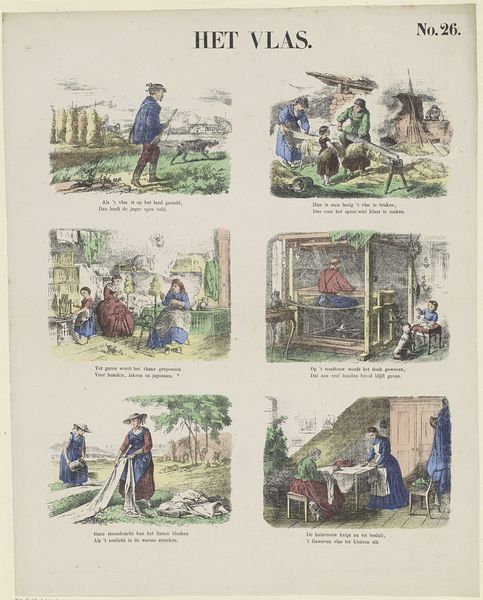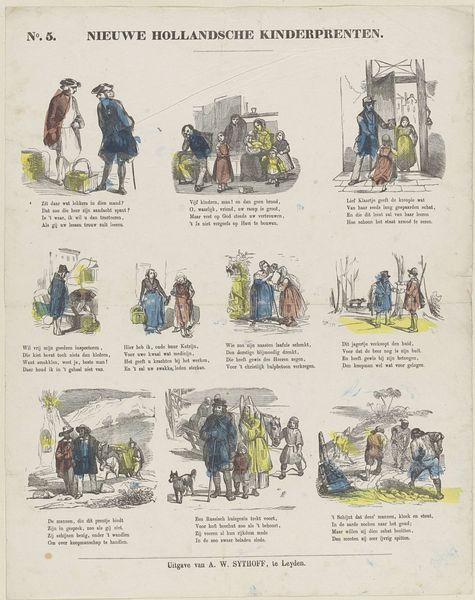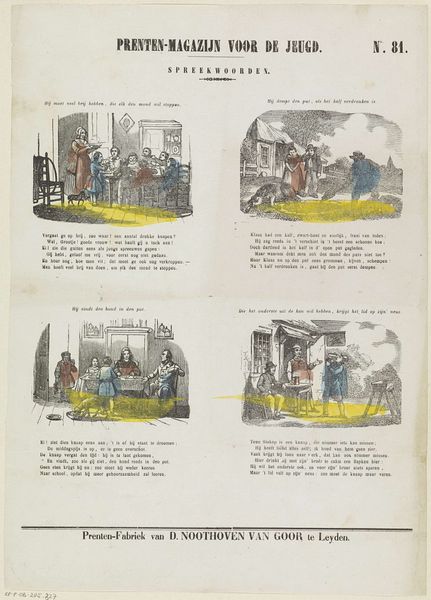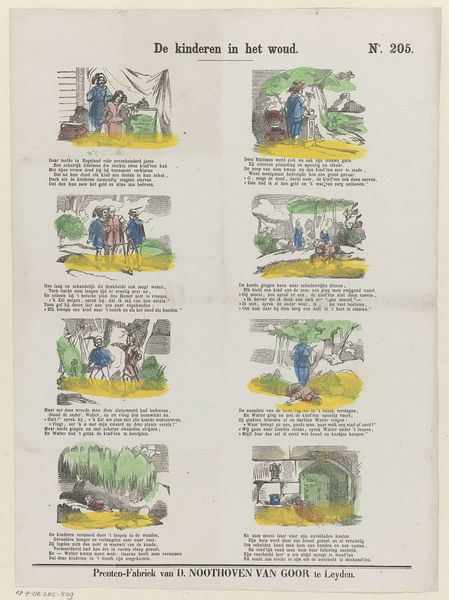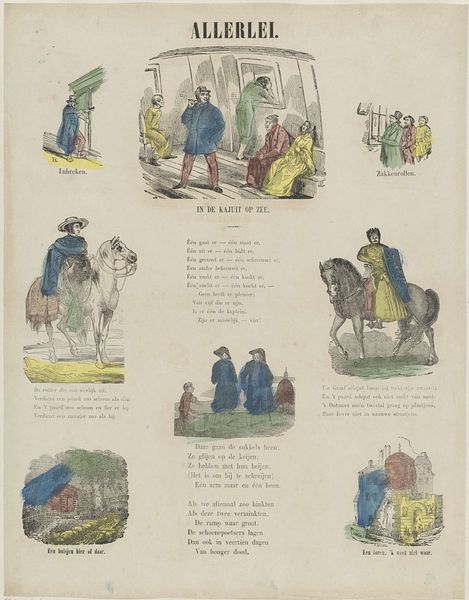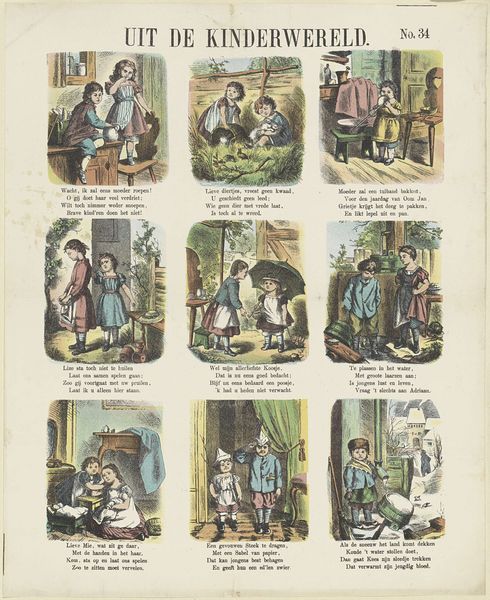
Dimensions: height 419 mm, width 338 mm
Copyright: Rijks Museum: Open Domain
Curator: What an evocative image! This is "Hondentrouw van de wieg tot het graf," dating to 1874 and created by De Ruyter & Meijer. It seems to be a print, perhaps an engraving or lithograph with watercolor. My first thought is just how intensely sentimental it feels. Editor: Sentimental, yes, almost aggressively so. The very composition—a series of vignettes showing the unwavering loyalty of a dog across a human’s life, from cradle to grave—reeks of a saccharine Victorian morality tale. There is something inherently hierarchical in assuming devotion of one group onto the other. Curator: But is that not precisely the enduring appeal? Consider how powerfully the image of the dog resonates as a symbol of unwavering faithfulness. From the child sleeping soundly under its watch, to the dying soldier cradled by the canine's love... the bond depicted offers an idealized vision of loyalty. The artist has rendered fidelity itself into an image. Editor: It's idealized to a point of, I think, absurdity. This unrelenting "goodness" performs the kind of harmful tropes that keep social justice movements stuck. We need stories that question relationships, not take them as givens of affection! Look how even death does not disrupt this dog's steadfast gaze at a memorial for his deceased. Curator: And it works because the symbolic vocabulary is so clear: dogs as emblems of loyalty were already deeply embedded in the cultural consciousness. Each little scene reminds us that this affection is present even from when "Wie haalt Charel zijn wacht," a small dog is looking out for an infant in bed. Consider how many cultures across the world value canine partnership in different forms. Editor: I recognize how that connection provides many communities—and especially vulnerable individuals—opportunities to find mutual trust outside oppressive structures. Still, such uncomplicated depictions erase complexities. The printing press afforded opportunities to disseminate these sentiments for all sorts of dubious reasons! In any case, the historical conditions matter just as much. Curator: That is true, the accessibility of the print medium must have widened the image's reach, further entrenching this specific vision of interspecies relations. But the emotions are still effective! Editor: For some. But art also offers a site for pushing past, not reinforcing, simple relationships. In an age so fixated on visibility and social justice, this dog trope requires unpacking at the level of shared power dynamics and not assumed affection! Curator: That is a powerful reading, truly. It just goes to show the artwork can contain multitude of feelings across periods in history. Editor: Well, I'm happy we got to sniff around the depths of dog loyalty for a bit, and got somewhere.
Comments
No comments
Be the first to comment and join the conversation on the ultimate creative platform.
